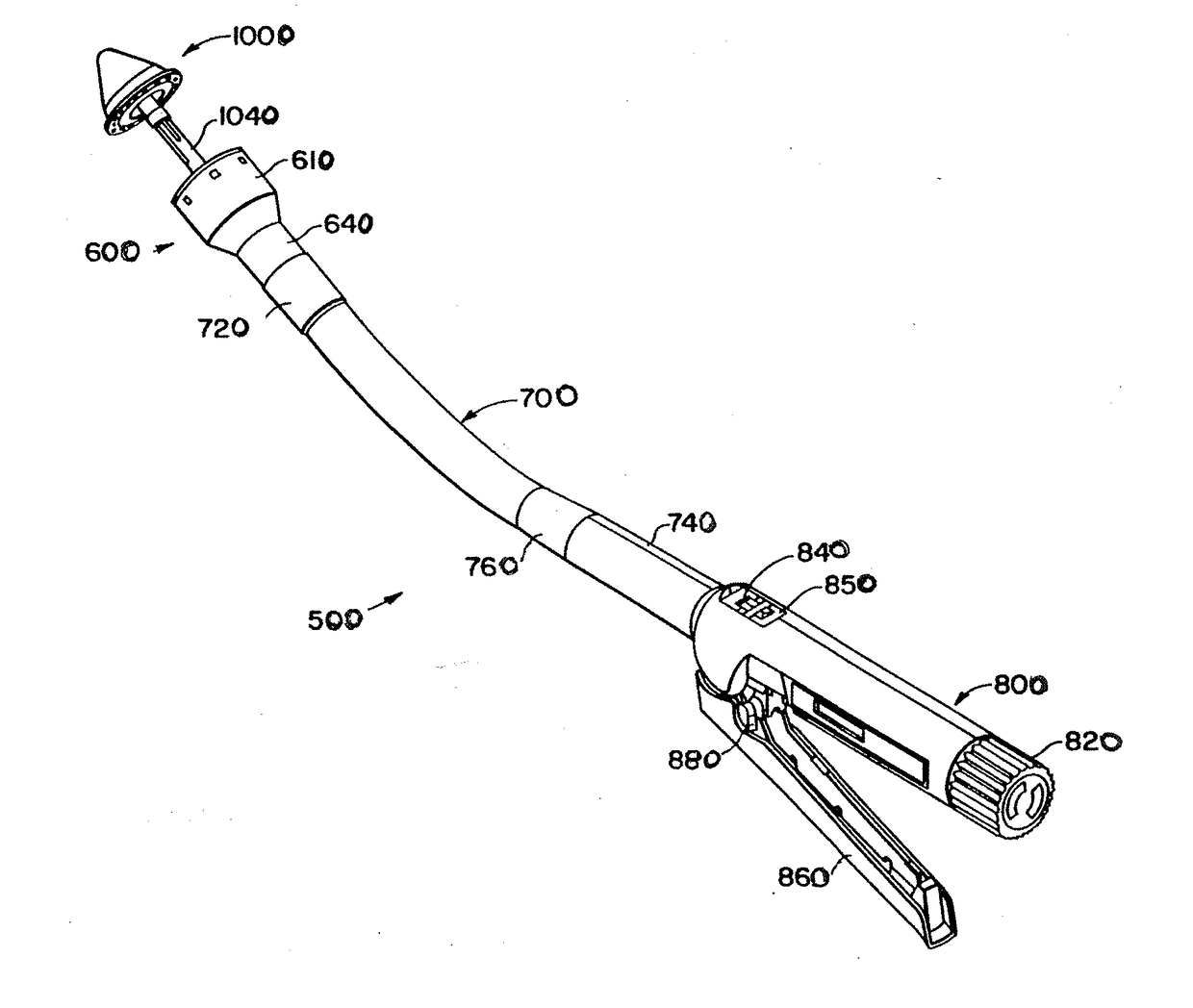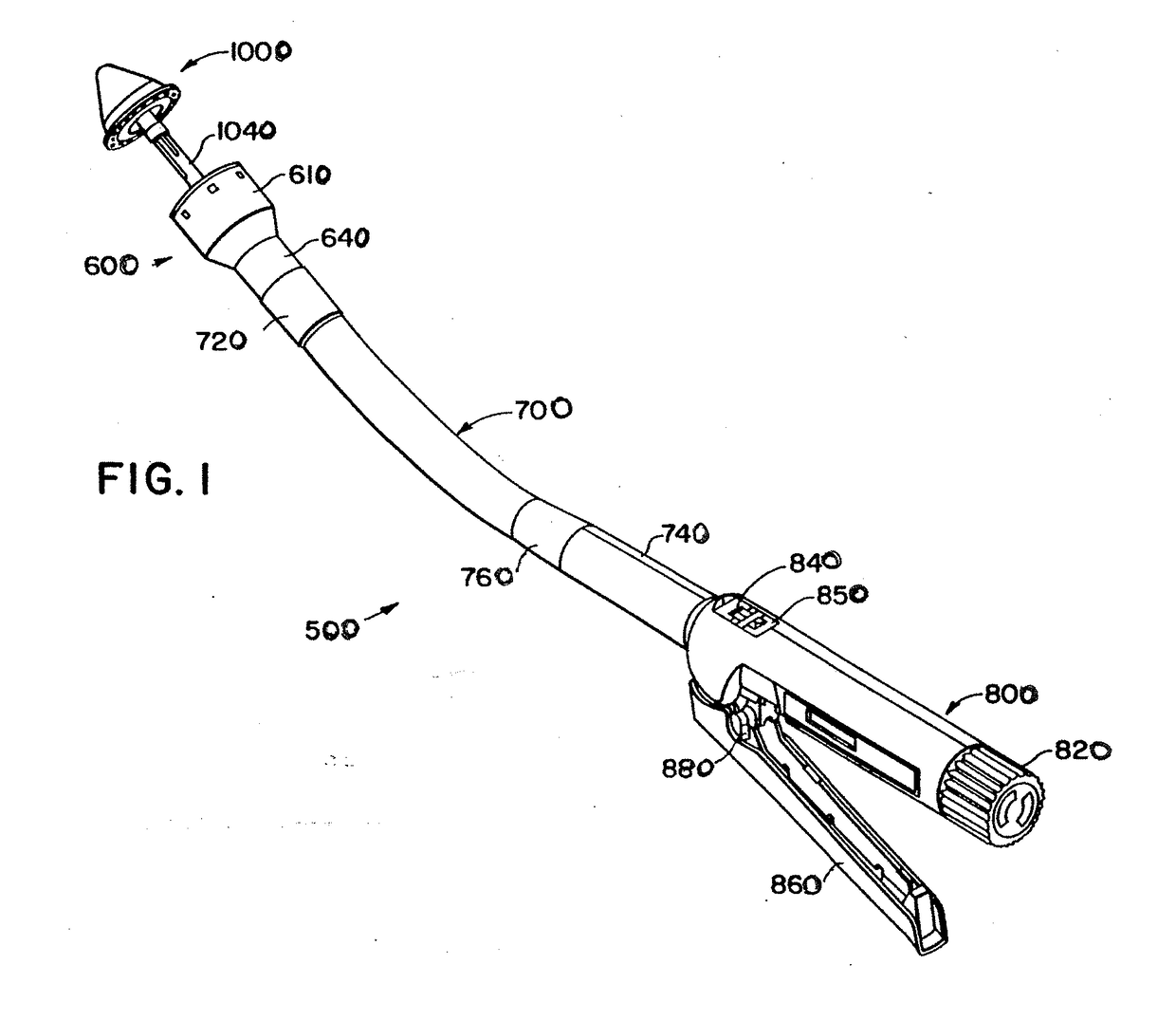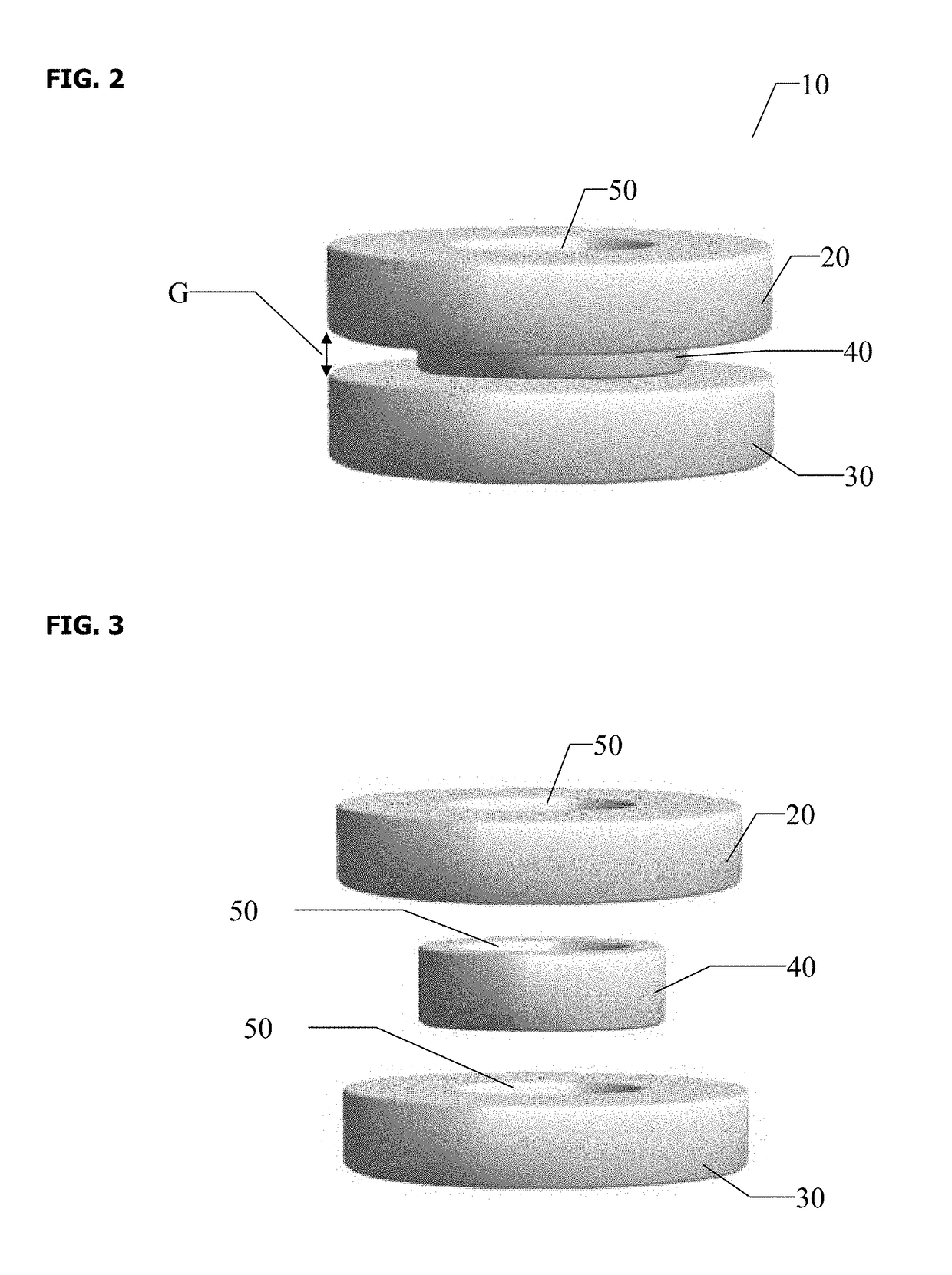Expandable Compression Rings for Improved Anastomotic Joining of Tissues
a tissue anastomosis and expansion technology, applied in the field of surgical instruments, can solve the problems of difficult access, significant morbidity and frequently death, morbidity and mortality, etc., and achieve the effects of improving tissue viability, and enhancing the properties of the repaired or adjoined tissu
- Summary
- Abstract
- Description
- Claims
- Application Information
AI Technical Summary
Benefits of technology
Problems solved by technology
Method used
Image
Examples
Embodiment Construction
[0029]Surgery often involves joining of two or more layers of tissue together with optional simultaneous sectioning of a portion of the tissue along the staple line. For example, colorectal surgery in many cases involves the resection of a segment of the colon and rectum. Following a colorectal resection, the colon and rectum are drawn together with a circular stapler and an end-to-end anastomosis is performed. Post- op leakage of the anastomosis has been shown to lead to morbidity and mortality.
[0030]Typical surgical stapling instruments have a staple-containing component and an opposing anvil component, between which at least two tissue layers to be joined are compressed prior to delivery of staples from the staple-containing component, whereby staples are piercing both tissue layers and are bent, deformed, or closed against the opposing anvil component.
[0031]Referring now to FIG. 1, a generic surgical anastomosis stapling instrument or stapling device for performing a circular an...
PUM
 Login to View More
Login to View More Abstract
Description
Claims
Application Information
 Login to View More
Login to View More - R&D
- Intellectual Property
- Life Sciences
- Materials
- Tech Scout
- Unparalleled Data Quality
- Higher Quality Content
- 60% Fewer Hallucinations
Browse by: Latest US Patents, China's latest patents, Technical Efficacy Thesaurus, Application Domain, Technology Topic, Popular Technical Reports.
© 2025 PatSnap. All rights reserved.Legal|Privacy policy|Modern Slavery Act Transparency Statement|Sitemap|About US| Contact US: help@patsnap.com



